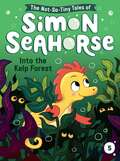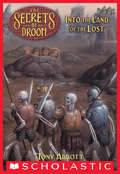- Table View
- List View
Into Reading™, Grade 5, MyBook, Modules 1–5
by Alma Flor Ada Kylene Beers F. Isabel CampoyNIMAC-sourced textbook
Into Reading™, Grade 5, MyBook, Modules 6–10
by Alma Flor Ada Kylene Beers F. Isabel CampoyNIMAC-sourced textbook
Into Reading™, Grade K, MyBook (Into Reading)
by Houghton Mifflin Harcourt Publishing CompanyNIMAC-sourced textbook
Into Reading™, Grade K, MyBook: Student Mybook Softcover Grade K (Into Reading Ser.)
by Houghton Mifflin HarcourtNIMAC-sourced textbook
Into Reading™, Grade K, Writer's Notebook (Into Reading, Read Aloud Module 10)
by Houghton HarcourtNIMAC-sourced textbook
Into Reading™: Grade 2, Grammar Practice Workbook
by Houghton Mifflin Harcourt Publishing CompanyNIMAC-sourced textbook
Into Reading™: Grammar Practice Workbook
by Houghton Mifflin HarcourtNIMAC-sourced textbook <P>Grade 5
Into Reading™: Grammar Practice Workbook Grade 1 (Into Reading Series)
by Houghton Mifflin HarcourtNIMAC-sourced textbook
Into Reading™: Grammar Practice Workbook Grade 1 (Into Reading Series)
by Houghton Mifflin HarcourtNIMAC-sourced textbook
Into Reading™: Grammar Practice Workbook Grade 3 (Into Reading Series)
by Houghton Mifflin HarcourtNIMAC-sourced textbook
Into Reading™: Grammar Practice Workbook Grade 4
by Houghton Mifflin HarcourtNIMAC-sourced textbook
Into Reading™: MyBook, Modules 5–6 (Into Reading™)
by Alma Flor Ada Kylene Beers F. Isabel CampoyNIMAC-sourced textbook <p> Grade 1</p>
Into Reading™: MyBook, Modules 7–8 (Into Reading™)
by Alma Flor Ada Kylene Beers F. Isabel CampoyNIMAC-sourced textbook <p>Grade 1</p>
Into Reading™: MyBook, Modules 9–10 (Into Reading™)
by Alma Flor Ada Kylene Beers F. Isabel CampoyNIMAC-sourced textbook <p>Grade 1</p>
Into Reading™: Read and Respond Journal (Into Reading Series)
by Houghton Mifflin HarcourtNIMAC-sourced textbook <p>Grade 3
Into Reading™: Read and Respond Journal (Into Reading Series)
by Houghton Mifflin HarcourtNIMAC-sourced textbook <p>Grade 5
Into Reading™: Read and Respond Journal, Grade 1 (Into Reading Series)
by Houghton Mifflin HarcourtNIMAC-sourced textbook
Into Science™: Student Activity Guide Grade 3 2021
by Marjorie Frank Michael R. Heithaus Michael A. DiSpezioNIMAC-sourced textbook
Into Science™: Student Activity Guide, Grade 4, 2021 (Into Science)
by Marjorie Frank Michael R. Heithaus Michael A. DiSpezioNIMAC-sourced textbook
Into Science™: Student Activity Guide, Grade 5, 2021 (Into Science Ser.)
by Marjorie Frank Michael R. Heithaus Michael A. DiSpezioNIMAC-sourced textbook
Into the Badlands (Fountas & Pinnell Classroom, Guided Reading Grade 6)
by Mary ReidNIMAC-sourced textbook
Into the Kelp Forest (The Not-So-Tiny Tales of Simon Seahorse #5)
by Cora ReefSimon tries to catch the mysterious Kelp Monster in this fifth book in The Not-So-Tiny Tales of Simon Seahorse chapter book series.Simon&’s friends are talking about the mysterious Kelp Monster at school one day and, for once, Simon doesn&’t have anything to add to the story! That&’s because he&’s never even heard of the Kelp Monster. But from what his friends say, it&’s bigger than a whale shark and its teeth are sharper than red-bellied piranha! And it lives in the Kelp Forest, where all the fish are scared of it. After all this talk, Simon decides he has a mission: to catch the kelp monster and find out why it&’s spooking the other sea creatures! But Simon&’s in for a big surprise about this so-called monster! With easy-to-read language and illustrations on almost every page, The Not-So-Tiny Tales of Simon Seahorse chapter books are perfect for emerging readers.
Into the Land of the Lost (Secrets of Droon #7)
by Tony Abbott Tim JessellA hidden door. A magical staircase. Discover the world of Droon! Aha! Lord Sparr has put Princess Keeah under a magic spell. Eric, Julie, and Neal can help her if they go to the Land of the Lost. But only ghosts live there. And if they don't get out soon, the kids will turn into ghosts themselves!


